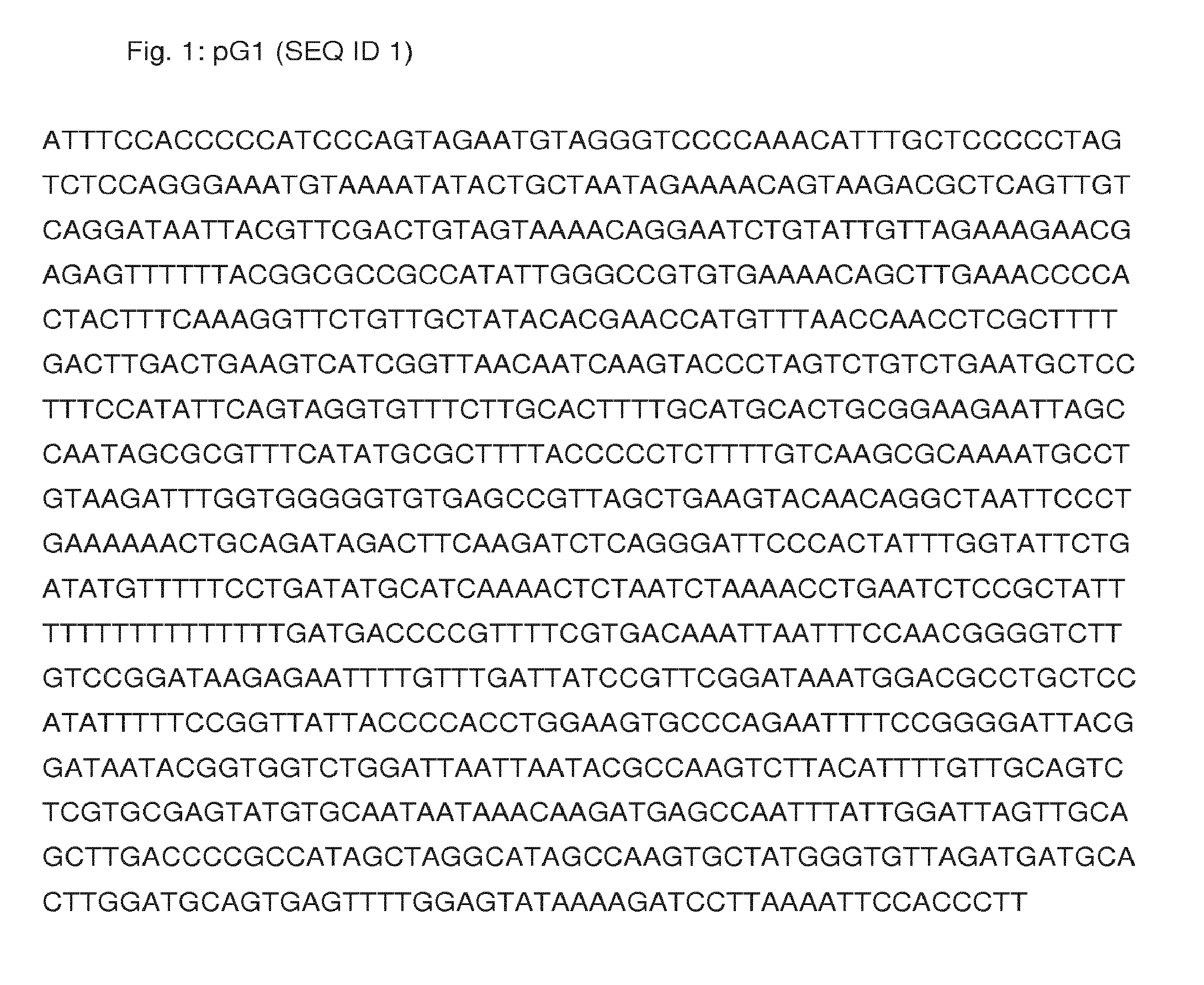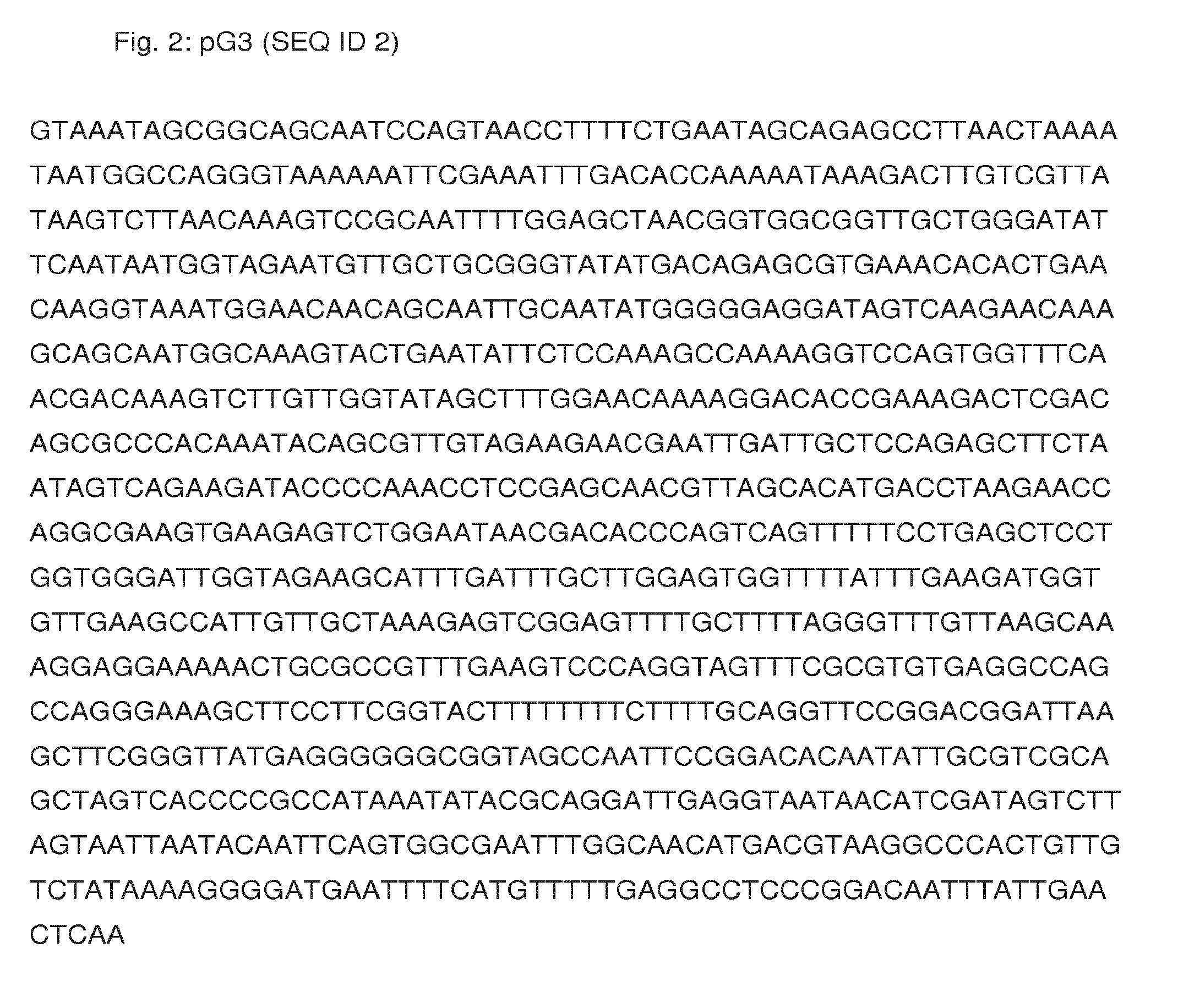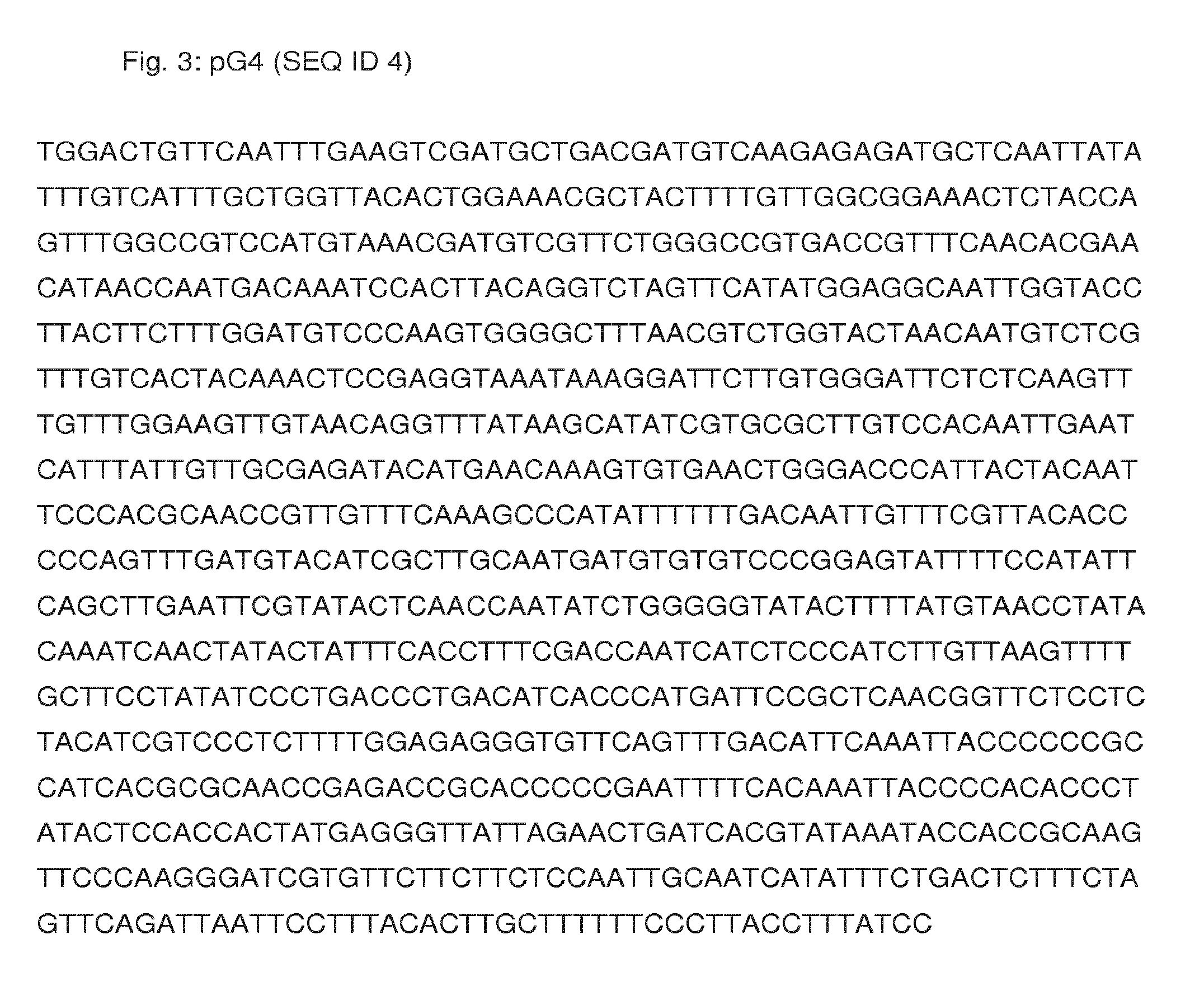Regulatable promoter
a promoter and promoter technology, applied in the field of regulation of promoters, can solve the problems of unsuitable production methods, unsuitable systems for use in certain products, and many other proteins only obtained at comparatively low levels
- Summary
- Abstract
- Description
- Claims
- Application Information
AI Technical Summary
Benefits of technology
Problems solved by technology
Method used
Image
Examples
example 1
Identification of Strong, Efficiently Regulated Genes in P. pastoris in Glucose-Limited Conditions
[0297]In order to identify strong, efficiently regulated genes and their respective promoters of P. pastoris in glucose-limit conditions, analysis of gene expression patterns was done using microarrays. P. pastoris cells grown in a glycerol batch (surplus of carbon source) were compared to cells which were cultivated in conditions where glucose was growth limiting (chemostat), thereby simulating the course of a protein production process, which is usually done in fed batch mode.
[0298]a) Strain
[0299]A wild type P. pastoris strain (CBS2612, CBS-KNAW Fungal Biodiversity Centre, Centraalbureau voor Schimmelcultures, Utrecht, The Netherlands), which can grow on minimal media without supplements, was used.
[0300]b) Cultivation of P. pastoris
[0301]Fermentations were performed with Minifors reactors (lnfors-HT, Switzerland) with a final working volume of 2.5 L.
[0302]Following media were used:
[0...
example 2
Comparative Promoter Activity Studies of the Newly Identified Promoters in P. pastoris using eGFP as Intracellularly Expressed Reporter Gene
[0326]In order to analyze the properties of the newly identified promoters under glucose limit conditions, shake flask screenings were performed as follows: Pre-culture for 24 hours was done with rich medium containing glycerol as carbon source—simulating the batch phase of the process (repressed state of the promoters), which was followed by the main culture with minimal medium and glucose feed beads—simulating the glucose-limited fed batch phase of the process (induced state of the promoters).
[0327]a) Strain & Expression Vector
[0328]The P. pastoris wild type strain (CBS2612, CBS-KNAW Fungal Biodiversity Centre, Centraalbureau voor Schimmelcultures, Utrecht, The Netherlands) was used as host strain. Transformation of the strain was carried out with an in-house vector named pPUZZLE (Stadlmayr et al. J. Biotechnol 2010 December; 150(4):519-29), c...
example 3
Comparative Promoter Activity Studies of the Newly Identified Promoters in P. pastoris using Human Serum Albumin (HSA) as Extracellular Expressed Reporter Gene
[0347]In order to analyze the properties of the newly identified promoters under glucose limit conditions, shake flask screenings were performed as follows: Pre-culture for 24 hours was done with rich medium containing glycerol as carbon source—simulating the batch phase of the process (repressed state of the promoters), which was followed by the main culture with minimal medium and glucose feed beads—simulating the glucose-limited fed batch phase of the process (induced state of the promoters).
[0348]a) Strain & Expression Vector
[0349]The P. pastoris wild type strain (CBS2612, CBS-KNAW Fungal Biodiversity Centre, Centraalbureau voor Schimmelcultures, Utrecht, The Netherlands) was used as host strain. Transformation of the strain was carried out with an in-house vector named pPUZZLE (Stadlmayr et al. J. Biotechnol 2010 December...
PUM
| Property | Measurement | Unit |
|---|---|---|
| concentrations | aaaaa | aaaaa |
| concentrations | aaaaa | aaaaa |
| concentrations | aaaaa | aaaaa |
Abstract
Description
Claims
Application Information
 Login to View More
Login to View More - R&D
- Intellectual Property
- Life Sciences
- Materials
- Tech Scout
- Unparalleled Data Quality
- Higher Quality Content
- 60% Fewer Hallucinations
Browse by: Latest US Patents, China's latest patents, Technical Efficacy Thesaurus, Application Domain, Technology Topic, Popular Technical Reports.
© 2025 PatSnap. All rights reserved.Legal|Privacy policy|Modern Slavery Act Transparency Statement|Sitemap|About US| Contact US: help@patsnap.com



